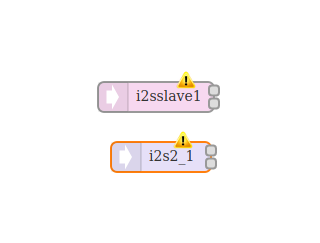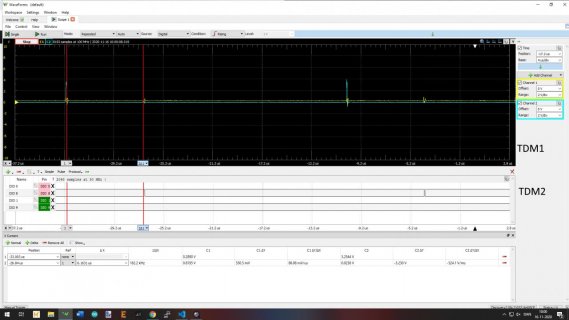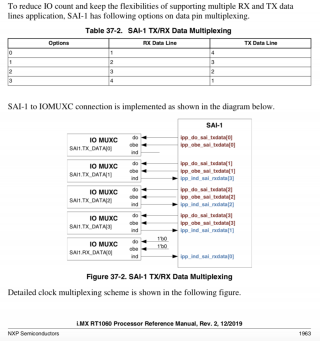As far as I know, nobody has successfully used TDM in slave mode. Or if they have, I didn't hear about it (or maybe I just forgot). Of course it should be theoretically possible, but without any working code you'd probably be starting with quite a project just to implement TDM slave mode using the known-good I2S slave mode code as a guide.
But even if you get TDM slave mode working at all, I suspect your idea may be based on a misunderstanding of how the hardware actually works, specifically this:
Did anyone else try to make 2 of TDM channels slave and run 1 of them as master so they will be in sync since they have the same master. There 3 SAI in the chip, i know Teensy support 2 of them.
Just because you configure one SAI port in slave mode does not mean the other SAI port will be in sync. When a SAI port is configured as master mode, it runs from Teensy's clock, regardless of what the other SAI ports are doing! This is why we don't support more than one I2S port in slave mode, and when even 1 port is used in slave mode the other port can't be used at all, in any mode.
You can explore which features can work together by dragging I/O instances onto the canvas in the
design tool. Known incompatible combinations will give little yellow error icons. Here is what you will see if you try to just use SAI1 in slave mode and SAI2 in master mode.

The solution to digital audio ports running out of sync with each other is of course resampling the audio data. Earlier this year code was contributed to do this for the S/PDIF input port, which can only run in slave mode because the incoming data carries the transmitting system's clock. My long-term plan is to someday add I2S slave mode support with resampling, so people will be able to effortlessly connect I2S master-mode hardware to Teensy.
But resampling 16 audio streams of a TDM port, or 32 streams if using 2 of them probably isn't practical even with Teensy 4.x running at 600 MHz. Or at least not high quality resampling. Maybe a low quality scheme like sample skipping or duplication would be able to keep up with 32 simultaneous audio channels and leave enough CPU power unused to actually do something useful with so much audio data.
Having said all that, I do have doubt about one point. Earlier I said TDM slave most should be theoretically possible. But I'm not actually 100% confident of that. The issue to investigate is how fact can BCLK run with slave mode. The SAI ports are able to receive & sync to BCLK at 2.8 MHz used by I2S. But TDM requires BCLK at 11.3 MHz. Typically maximum clock speeds are slower when running as inputs, due to on-chip hardware which must sync the incoming clock. Whether SAI supports BCLK that high is a good question. I honestly do not know. I'm just pointing out a possible technical gotcha to check before you even start.
If you do go to so much trouble and manage to get even 1 SAI port running in TDM slave mode, I hope you'll share the code. Or at least confirm it does work, since right now the best I know is nobody has made it work and whether it's even possible is an open question.





